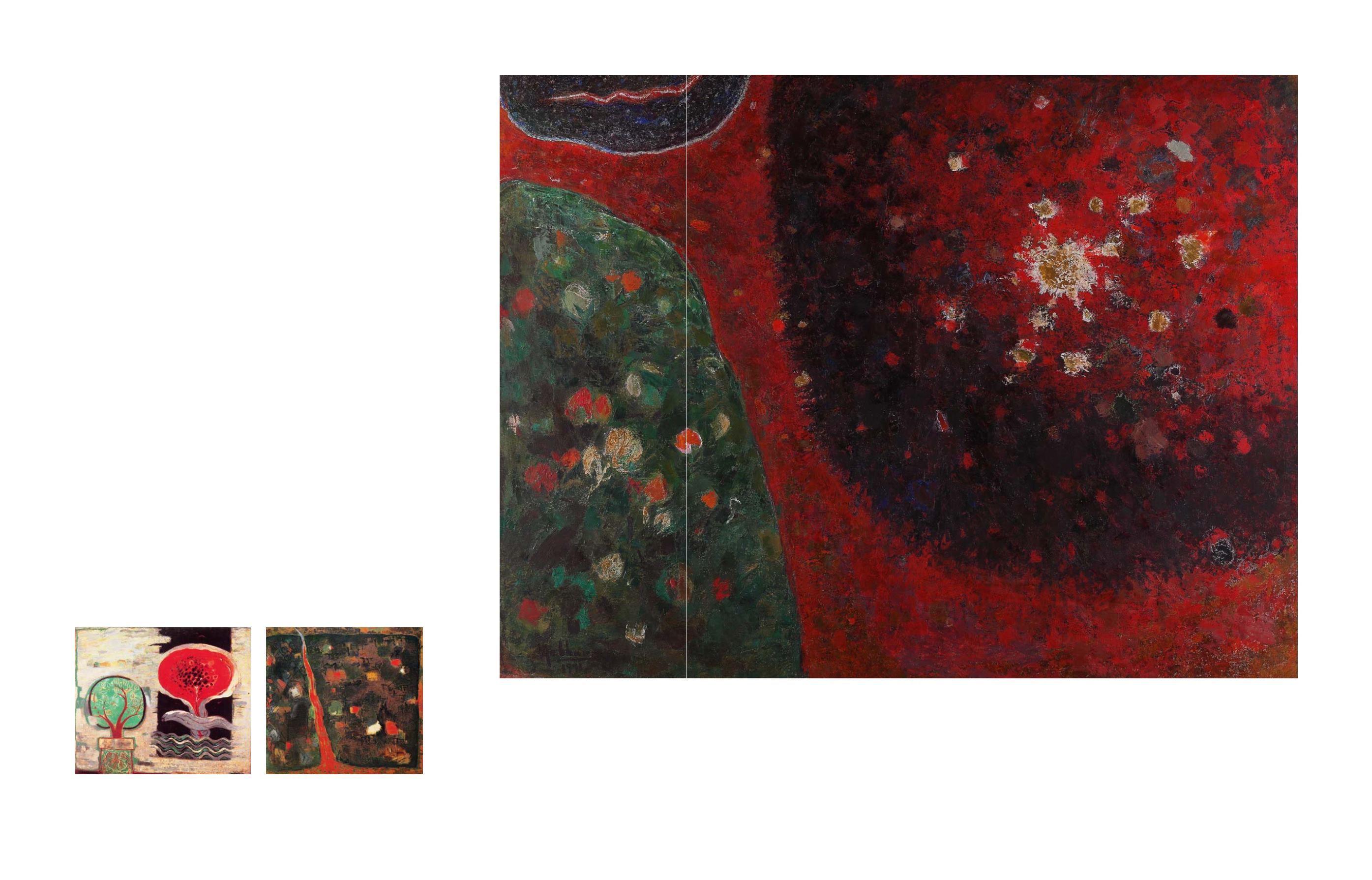

182
Saffronart | Evening Sale
symbolic rivulet of red runs between the two. By the 1990s, Hebbar had developed
his painting technique and used impasto in multiple layers of contrasting colours
on the canvas. “The colours gleam like a thousand gems or smoulder like the
embers of a dying fire, scintillating in the light. He loved the feeling of vibrant
colours appearing in minute cracks and pin pricks through a thick layer of a
contrasting colour.” (Rao and Prasanna, p. 27)
The present lot exemplifies Hebbar’s signature style of employing textured
layers on the canvas, allowing broken flecks of paint to emerge in bursts out of
its depth. “Hebbar’s art begins with the visible world of realism and culminates
with the ephemeral and the intangible world of abstraction... his abstraction is
distilled from nature into a clarity of form and texture that culminates in a grand
simplicity of colour and design. At his peak he had mastered the art of separating
the superfluous from the essential. It is in these works of his autumn years, that he
truly converts painting into music – the brushstrokes and the colours being reborn
as the manifestations of universal energy.” (Rao and Prasanna, p. 31)
From left to right:
War and Peace
, 1977. Collection of Mrs Rajani Prasanna, Bombay
Refugees
, 1971. National Gallery of Modern Art, New Delhi
Both images from K K Hebbar,
Voyage in Images
, Mumbai: Jehangir Art Gallery, 1991
PROPERTY FROM AN EMINENT COLLECTION, NEW DELHI
67
K K HEBBAR
(1911 ‒ 1996)
War and Peace
Signed and dated ‘Hebbar 1991’ (lower left)
1991
Oil on canvas
44 x 59.5 in (111.8 x 151.1 cm)
Rs 35,00,000 ‒ 45,00,000
$ 53,035 ‒ 68,185
PROVENANCE:
Sotheby’s, New York, 10 October 1997, lot 34
PUBLISHED:
Contemporary Indian Art: Glenbarra Art Museum Collection
,
Japan: Glenbarra Art Museum, 1993, p. 27 (illustrated)
183
“I have traced the progression of my imagery from the academic to
near‒abstraction. My works are generated by my intense feeling for my
environment. I seek to find myself and follow it to wherever it leads me.”
K K HEBBAR


















